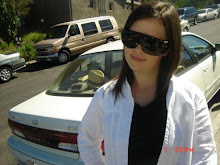 I read about this book in a review of the movie Public Enemies
I read about this book in a review of the movie Public EnemiesThe story that Burrough set out to write and the story that I set out to read turned out to be very different. He chose to write a comprehensive narrative history of the rise and fall of the six major criminal factions whose crime wave led to the creation of the FBI as we know it today. In the Author's Note, Burrough states, "It is a big, sprawling story with gunfights and investigations in dozens of American cities involving literally hundreds of major and minor players, including an army of FBI agents, sheriffs, and policemen." Yes, it is indeed. Each chapter covers about a month's worth of events, jumping from state to state, bank robbery to kidnapping, investigation to jail breakout. I found it incredibly difficult to keep track of names and events, and it wasn't until I was about halfway through the 552 pages that I settled into the format (it took about two weeks to get through this book, which is a very long time for me). I tried not to worry too much about remembering everything and to enjoy each story on its own.
The stories are as interesting as I had expected. Burrough covers Bonnie and Clyde, Baby-Face Nelson, Pretty Boy Floyd, Machine Gun Kelly, the Dillinger Gang, and the Barker Gang. Their reputations in popular culture were not all earned, especially in the case of Bonnie and Clyde. They are depicted in the book as wannabe amateurs who never reached the level of fame in life as they have done in death (thanks to the 1967 film). Baby-Face Nelson comes across as a sociopath who enjoyed shooting at civilians. Ma Barker, the infamous brains behind the Barker Gang, was no more than an old, simple woman who enjoyed jigsaw puzzles. Hoover is responsible for the myth of her as a criminal mastermind; he needed a way to explain her death at the hands of FBI agents. Dillinger paid attention to his own press, and acted accordingly in bank holdups. He liked the thought of being someone the public looked up to.
Reading about the early years of the FBI was frustrating for me. It took agents years to find their way and settle in to their responsibilities. This is due in part to Hoover's recruiting techniques. He wanted an agency of well-bred young lawyers, and did not bother to hire anyone with experience in law enforcement. Agents could be suspended for being one minute tardy to work. Each field office eventually became responsible for their own gun training. There are countless stories of agents losing suspects, forgetting to follow up on leads, missing chances due to lack of training and foresight. Hoover had a few "cowboys" who were brought in to help the college boys as needed, which was often. The cringe-worthy part for me was the lack of civil rights extended to suspects. One woman was held hostage in an apartment by FBI agents, who questioned her relentlessly about her boyfriend's involvement in the Kansas City Massacre. Another man was told that he had no rights, and that no one would miss him if the agents "accidentally" killed him.
While I did enjoy these stories, I would rather not have read a narrative history. I found the format to be too confusing, and it was too difficult to put these events into perspective. One more thing? I have no idea who that is on the front cover. I read the entire book and front and back covers -- it doesn't say anywhere! What the what?


No comments:
Post a Comment